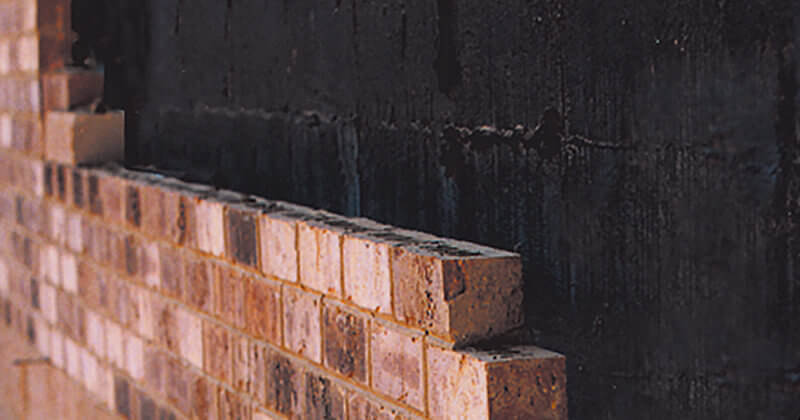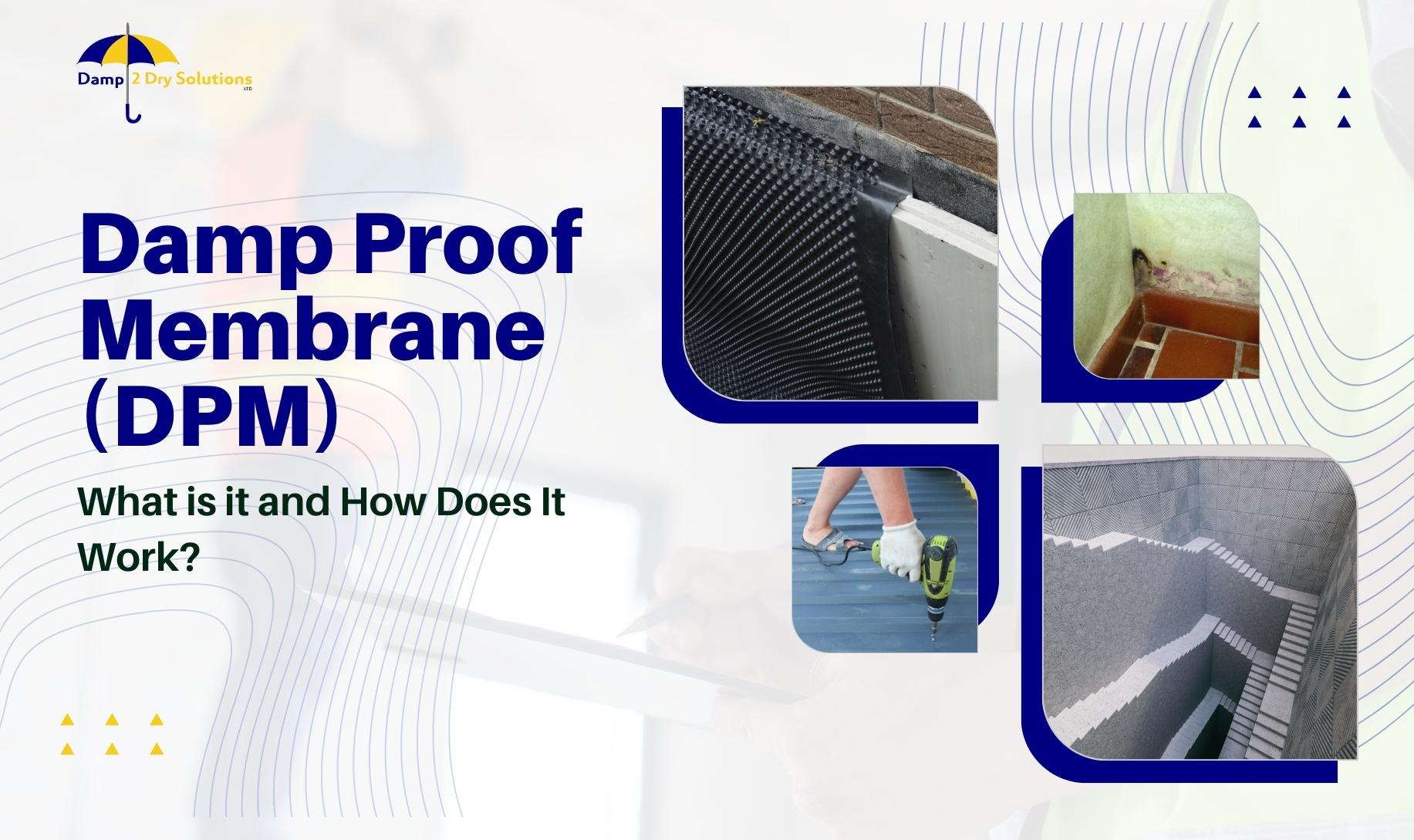Exploring the Different Methods and Solutions for Effective Damp Proofing
Wetness in structures positions considerable difficulties to both architectural honesty and interior air quality. Various methods and solutions have emerged to fight this pervasive problem. From standard damp-proof membrane layers to innovative chemical therapies, each method provides special benefits. Recognizing these options is crucial for reliable dampness control. Selecting the ideal remedy depends on details building conditions and needs, prompting further expedition right into the most reliable wet proofing approaches readily available.
Recognizing the Root Causes Of Wetness
Moisture can develop from various resources, recognizing these reasons is crucial for efficient remediation. Commonly, wetness stems from three key resources: increasing damp, penetrating damp, and condensation. Climbing moist happens when groundwater travels up with porous products, such as block or rock, frequently due to an absence of an efficient barrier (mould treatment newcastle). Penetrating moist is typically caused by exterior elements, including roof covering leaks, faulty seamless gutters, or harmed walls, permitting water to penetrate a residential property. Condensation, on the other hand, arises from excess moisture airborne, typically exacerbated by inadequate ventilation and temperature distinctions, bring about water droplets basing on surface areas. Determining these underlying issues is essential, as each sort of wetness requires a tailored method for removal. Proper evaluation aids in identifying one of the most reliable remedies, inevitably protecting the structural integrity of a building and enhancing indoor air high quality
Standard Damp-Proof Membrane Layers

Chemical Damp-Proofing Solutions
Chemical damp-proofing solutions supply an innovative technique to stop dampness breach in structures. These techniques generally entail the application of fluid chemicals that permeate stonework and create an obstacle versus increasing moist. Frequently utilized chemicals include silanes, siloxanes, and other water-repellent agents that react with surface products to develop a hydrophobic layer.The application process normally needs drilling holes right into the walls, infusing the chemical solution, and allowing it to heal. This technique is especially helpful for older frameworks where standard damp-proof membrane layers might be not practical. Furthermore, chemical damp-proofing can be much less disruptive and more cost-effective than comprehensive remodelling projects.While effective, these solutions depend on correct application and ecological problems for peak performance. Regular maintenance and tracking are necessary to guarantee the longevity of the damp-proofing therapy. On the whole, chemical damp-proofing stands for a flexible choice for safeguarding structures against moisture-related damages
Tooth Cavity Wall Surface Construction Methods
Dental caries wall building and construction techniques use many advantages, specifically in wetness control and power efficiency. By integrating an air void in between two layers of masonry, these wall surfaces efficiently minimize water ingress while enhancing insulation. This mix not just protects structures from moisture yet likewise adds to lowered energy usage.
Benefits of Dental Caries Walls
When taking into consideration effective moist proofing methods, the advantages of cavity walls stick out plainly. Cavity wall surfaces are composed of 2 separate layers, producing an air space that properly lowers moisture infiltration. This design minimizes the risk of wetness, as the external wall surface works as an obstacle versus rain and water access. In addition, dental caries wall surfaces enhance thermal insulation, which adds to energy effectiveness by minimizing warm loss. They likewise supply audio insulation, aiding to develop a quieter interior setting. The air gap allows for air flow, which assists in wetness control and minimizes the possibility of mold growth. These benefits not only enhance the overall convenience of a structure however additionally add to its durability and structural honesty.
Wetness Control Techniques
Effective dampness control approaches are vital in cavity wall surface construction to assure long-term defense against dampness. One primary approach entails the consolidation of weep holes, which assist in water drainage from the tooth cavity, avoiding accumulation. Furthermore, the use of breathable membranes can assist take care of wetness degrees while enabling caught vapor to run away. Proper placement of insulation is additionally vital, as it needs to not block drain courses. Ensuring that the outer leaves of the tooth cavity wall surface are created with water-resistant materials boosts total longevity. Normal maintenance checks are vital to recognize any type of obstructions or damages early, guarding the structure's integrity. Ultimately, a combination of these methods creates a robust defense against wetness breach in dental caries wall surfaces.
Insulation and Energy Effectiveness
Insulation plays an essential function in boosting power effectiveness within tooth cavity wall building. By integrating insulating materials, these wall surfaces develop a thermal obstacle that reduces heat loss and reduces energy consumption. Effective insulation not only assists preserve a steady indoor temperature level however likewise alleviates the threat of dampness, as it prevents condensation within the wall surface cavity. Numerous strategies, such as making use of stiff foam boards or mineral wool, can be employed to attain optimal insulation performance. Furthermore, proper installation is important to ensure that voids and voids are reduced, which can otherwise jeopardize power efficiency. Ultimately, a well-insulated cavity wall adds considerably to overall sustainability and lowers home heating and air conditioning costs for property owners.
Exterior Damp Proofing Techniques
External moist proofing methods are essential for securing structures from wetness infiltration. Two efficient techniques include the application of water resistant membrane layers and the setup of French drains. These solutions aid alleviate water buildup and protect the stability of structures.
Waterproof Membrane Application
While numerous techniques exist for avoiding dampness ingress, the application of water-proof membranes stays a highly efficient exterior damp proofing method. These membranes are usually made from products such as polyethylene, rubber, or modified asphalt, providing a robust barrier versus water infiltration. The installation process includes using the membrane to the exterior surfaces of structures or wall surfaces, ensuring complete protection to stop leaks. Correct attachment and securing at joints are critical to making best use of effectiveness. Waterproof membranes can be applied in various forms, consisting of liquid coatings and sheet membranes, enabling adaptability based upon the specific requirements of the structure. This technique not just shields structures from wetness however likewise improves their durability and structural stability.
French Drain Setup
One efficient method for taking care of groundwater and avoiding dampness buildup around a structure's structure is the installation of a French drain. This drain system includes a trench loaded with crushed rock and a perforated pipe that redirects surface water far from the structure. Appropriate setup website requires mindful preparation, making certain that the drainpipe inclines away from the structure to facilitate ideal water circulation. Furthermore, the location of the drainpipe is crucial; it ought to be positioned in locations susceptible to pooling or excess wetness. Routine upkeep, consisting of clearing up particles from the crushed rock and ensuring the pipeline stays unblocked, is essential for long-lasting performance. Inevitably, a well-installed French drainpipe can significantly minimize the threat of water-related problems in foundations and cellars.
Interior Waterproofing Techniques
Inside waterproofing strategies are vital for shielding a building's inside from dampness seepage and prospective water damage. These strategies generally involve the application of specific materials and methods designed to create a wetness obstacle within the framework. One common approach is using waterproof finishes or sealers on wall surfaces and floors, which avoid moisture from permeating surfaces.Additionally, mounting indoor drainage systems, such as sump pumps, can properly handle water build-up in cellars and crawl spaces. Another approach includes the usage of vapor obstacles, which are installed to inhibit wetness motion from the ground right into living spaces.Moreover, addressing any type of fractures or gaps in wall surfaces or structures with proper sealers assures an extensive protection versus water breach. By applying these interior waterproofing strategies, homeowner can greatly lower the threat of mold and mildew development, architectural damages, and various other moisture-related problems. Appropriate execution of these methods is vital for long-lasting security and building integrity.
Regular Maintenance and Evaluation Practices
Routine upkeep and assessment methods are essential for assuring the lasting performance of moist proofing options in any type of building. Routine checks enable home owners to determine early signs of dampness invasion, such as peeling off paint, mold growth, and musty smells. These signs can signal underlying concerns that call for prompt attention.Inspections need to be carried out a minimum of annually, concentrating on at risk locations like basements, creep rooms, and outside walls. Throughout these analyses, property proprietors must analyze sealants, water drainage systems, and air flow to verify they work correctly.Additionally, preserving downspouts and seamless gutters is crucial, as clogged up systems can cause water accumulation near the structure. Carrying out a regular upkeep routine, together with prompt fixings, can considerably prolong the life-span of damp proofing procedures and safeguard the architectural honesty of the structure. Aggressive procedures inevitably add to the general health and wellness and security of the living atmosphere.
Regularly Asked Questions
The Length Of Time Does Damp Proofing Commonly Last?
The period of moist proofing performance varies, typically lasting in between 20 to half a century. Factors such as application high quality, ecological problems, and upkeep practices considerably affect the longevity of the wet proofing treatment.

Can I Damp Evidence My Home Myself?
The private pondered the feasibility of do it yourself damp proofing. With correct research and the right materials, it is feasible. They also identified the value of professional advice to assure lasting performance and stop future issues.
What Are the Indications of Ineffective Damp Proofing?
Indicators of ineffective moist proofing include relentless musty odors, noticeable mold and mildew growth, peeling paint, wet patches on wall surfaces, and wood decay - damp removal newcastle. Property owners need to address these issues immediately to stop further damage and health and wellness issues
Does Damp Proofing Affect Indoor Air Top Quality?

How Much Does Expert Damp Proofing Price?
Professional moist proofing prices vary significantly, typically ranging from $1,000 to $5,000 depending upon the residential or commercial property's dimension, the level of the damp problem, and picked approaches. Each situation needs a customized analysis for accurate pricing. Frequently, wetness stems from three primary sources: climbing wet, penetrating moist, and condensation. When considering reliable wet proofing methods, the advantages of cavity walls stand out prominently. Outside moist proofing approaches are essential for protecting structures from wetness infiltration. While different techniques exist for protecting against moisture ingress, the application of waterproof membranes remains an extremely efficient outside moist proofing method. Indications of inefficient moist proofing include consistent mildewy smells, visible mold growth, peeling paint, damp spots on wall surfaces, and timber decay.